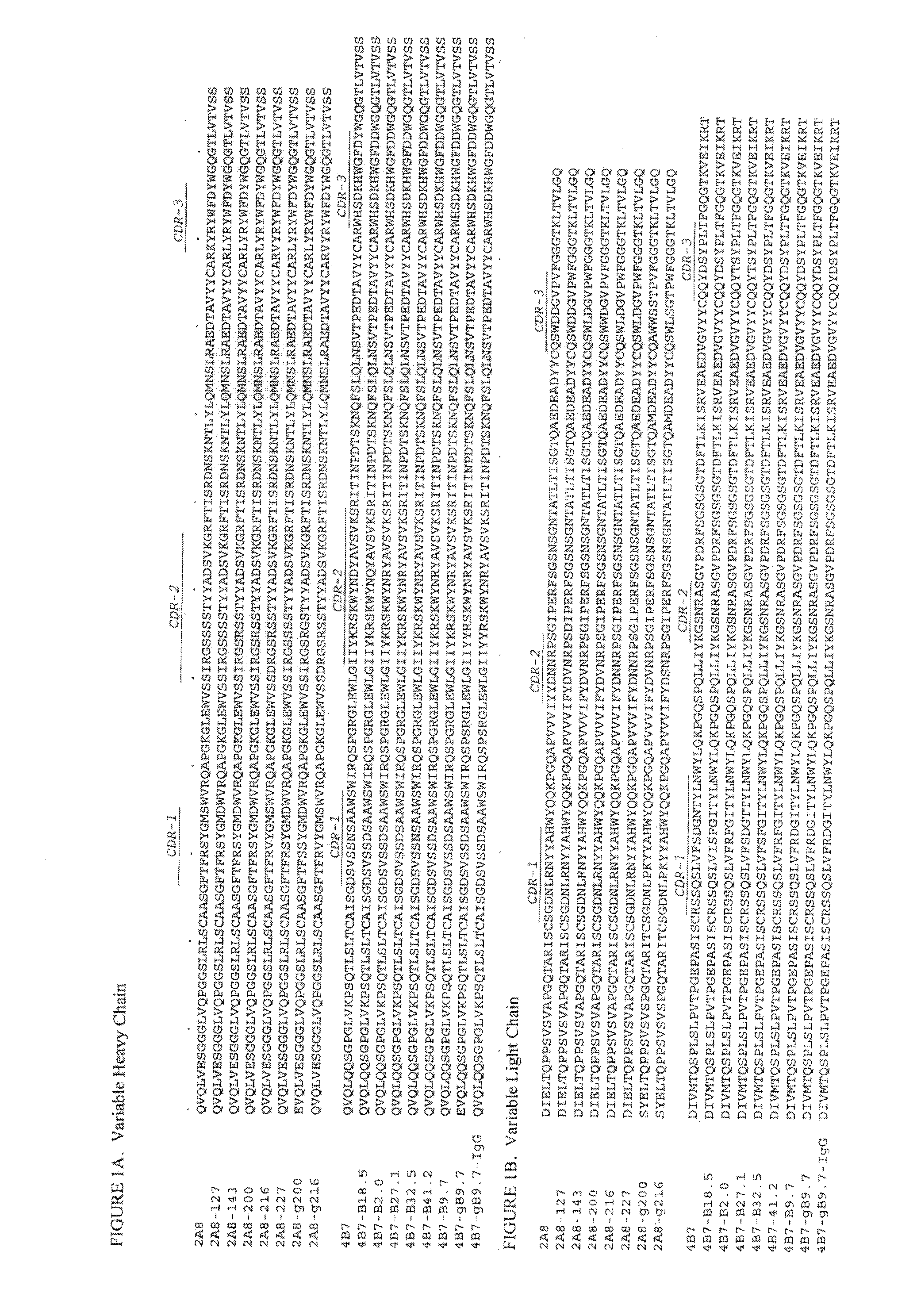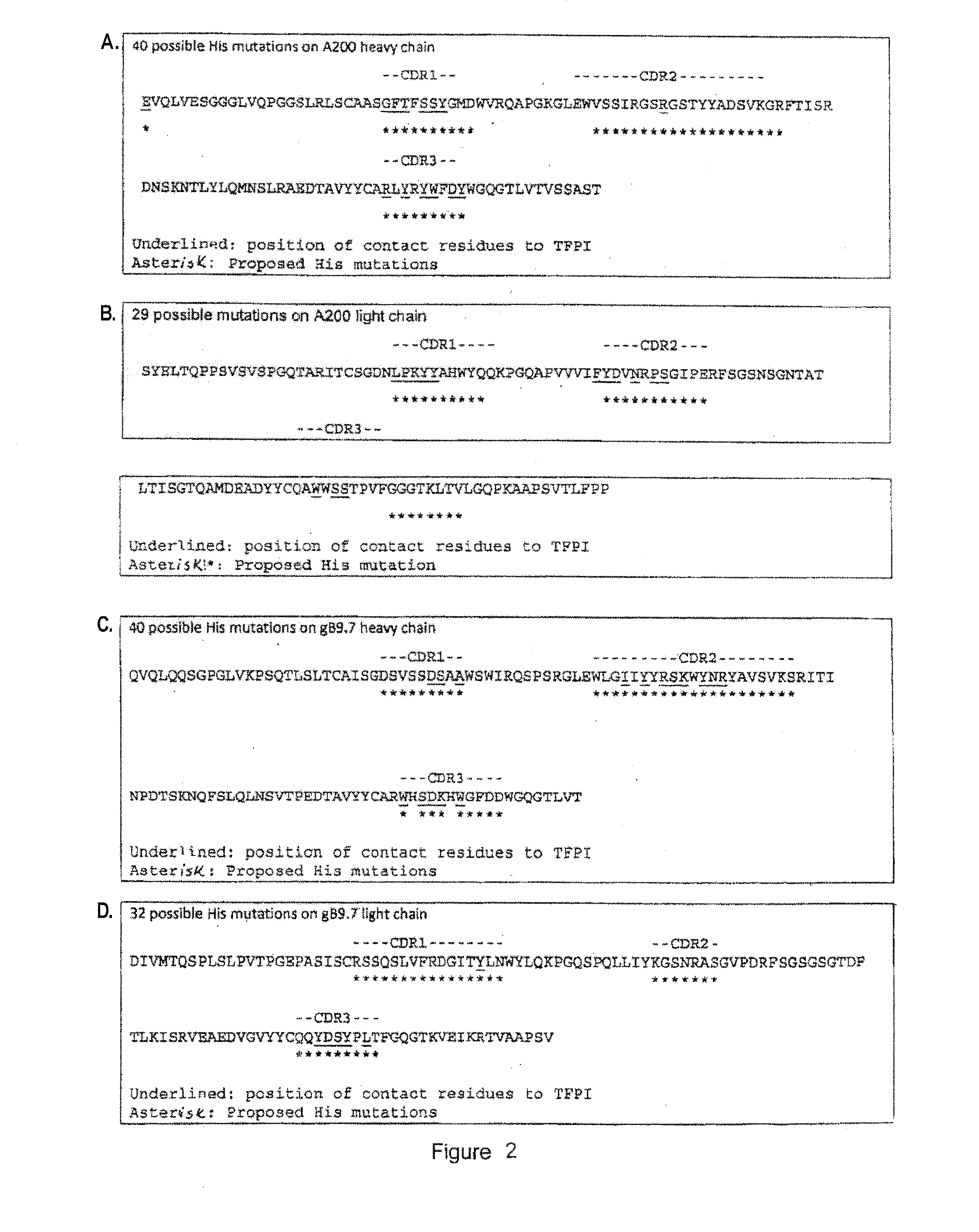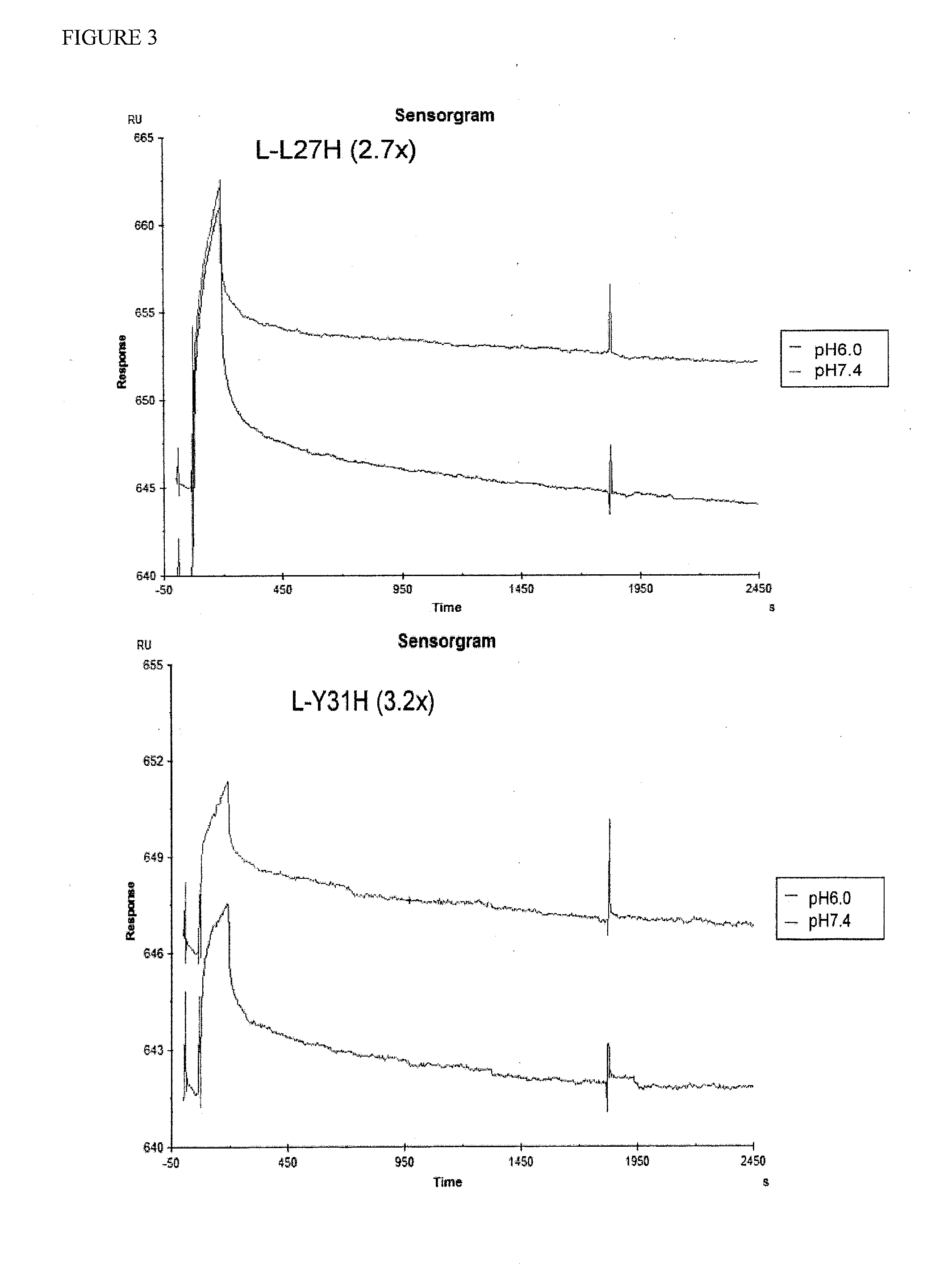Anti-tfpi antibody variants with differential binding across ph range for improved pharmacokinetics
a technology of tfpi and antibody, which is applied in the direction of peptides, drug compositions, extracellular fluid disorders, etc., can solve the problems of affecting the pharmacokinetics of patients, and requiring on-demand treatment, so as to reduce the burden of injections on patients, reduce the cost of goods, and increase half-life
- Summary
- Abstract
- Description
- Claims
- Application Information
AI Technical Summary
Benefits of technology
Problems solved by technology
Method used
Image
Examples
Embodiment Construction
[0017]The term “tissue factor pathway inhibitor” or “TFPI” as used herein refers to any variant, isoform and species homolog of human TFPI that is naturally expressed by cells. In a preferred embodiment of the invention, the binding of an antibody of the invention to TFPI reduces the blood clotting time.
[0018]As used herein, an “antibody” refers to a whole antibody and any antigen binding fragment (i.e., “antigen-binding portion”) or single chain thereof. The term includes a full-length immunoglobulin molecule (e.g., an IgG antibody) that is naturally occurring or formed by normal immunoglobulin gene fragment recombinatorial processes, or an immunologically active portion of an immunoglobulin molecule, such as an antibody fragment, that retains the specific binding activity. Regardless of structure, an antibody fragment binds with the same antigen that is recognized by the full-length antibody. For example, an anti-TFPI monoclonal antibody fragment binds to an epitope of TFPI. The a...
PUM
| Property | Measurement | Unit |
|---|---|---|
| pH | aaaaa | aaaaa |
| pH | aaaaa | aaaaa |
| pH | aaaaa | aaaaa |
Abstract
Description
Claims
Application Information
 Login to View More
Login to View More - R&D
- Intellectual Property
- Life Sciences
- Materials
- Tech Scout
- Unparalleled Data Quality
- Higher Quality Content
- 60% Fewer Hallucinations
Browse by: Latest US Patents, China's latest patents, Technical Efficacy Thesaurus, Application Domain, Technology Topic, Popular Technical Reports.
© 2025 PatSnap. All rights reserved.Legal|Privacy policy|Modern Slavery Act Transparency Statement|Sitemap|About US| Contact US: help@patsnap.com



